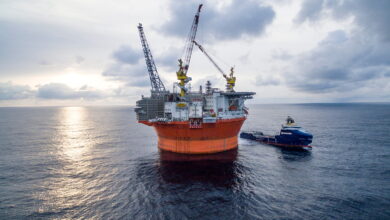Panel: Knowing your reservoir, well key to choosing right fluids in MPD/UBD operations

By Katie Mazerov, contributing editor
Understanding reservoir characteristics and the particular well challenges in managed pressure drilling (MPD) and underbalanced drilling (UBD) operations is critical to selecting the right fluid from a wealth of options that are available. “Just as we are committed to drilling the un-drillable, we are determined to produce the un-produceable,” Dodie Ezzat, technology application manager for Halliburton’s Baroid Industrial Drilling Products division, said in a panel presentation at the 2013 IADC/SPE Managed Pressure Drilling & Underbalanced Operations Conference & Exhibition, 17-18 April in San Antonio. “We need to look in our toolbox at all the alternatives available today for fluids and foams,” he said.
Mr Ezzat was joined by Mike Rafferty, manager, engineering services for M-I Swaco, a Schlumberger company, and Reuben Graham, global technical specialist for Weatherford, who discussed the array of fluid options available, including liquids and brines, gas, mist, foam and gasified liquids.
“We have to ensure the fluid will give us wellbore stability and drilling capacity, and since we’re targeting reservoir rock, we need to make sure we don’t damage it,” Mr Ezzat said. “This is especially important in horizontal wells. Today, the industry is spending more than $1 billion just on trying to diagnose the reservoir properties.”
Most important, he continued, is to have a good completion and workover fluid that can speed up fluid recovery and prevent losses. “We need to make sure we achieve maximum productivity while striving for a solution that meets environmental safety regulations, causes minimal damage when drilling the hole, and is compatible with the completion design at the lowest cost for transport, storage and disposal.”
Fluid selection is as important in unconventional drilling situations as it is conventional. “Just because we’re using MPD or UB practices doesn’t mean we can suspend the normal constraints on fluid selection,” Mr Rafferty said. “There is a universe of possibilities for operating within a window of wellbore stability and fracture gradient. This includes understanding the geomechanical stresses and failure mechanisms than can weaken the formation.” Pore pressure is more of a design consideration when using MPD/UBD techniques. “Understand the formation fluids that may enter the wellbore, be aware of potential contamination of the fluids you are using and adhere to generally accepted practices in the region.”
OBM for reactive shales
For example, air/gas drilling used in “dry” formations where there is no influx of water requires highly compressed gas volumes to clean the well. Typically, oil-based, or non-aqueous fluids (NAF), are used in reactive shales because water weakens the wellbore, but water-based fluids can be enhanced with chemicals, Mr Rafferty said. He noted the Marcellus Play is characterized by hard, compact shale that is considered stable but also has micro-fractures and is permeable. “You may not have a problem on day one of an operation, but you will have a problem on day 13.”
Among the MPD/UBD challenges related to fluid selection are hole cleaning of the lateral section cutting beds, lubricants for torque and drag, the thermal temperature profile, completion fluid selection versus metallurgy compatibility, fluid compatibility and chemical interaction, and effects of sour gas and carbon dioxide on fluids.
Foams, water-and mud-based, are used primarily for lower-pressure wells, but they have been applied successfully in high-permeability shallow sands, coalbed methane wells, normally pressured formations and clean-outs, Mr Graham explained.
A typical wellhead with foam applied with MPD includes a hydraulic, remotely actuated control (HCR) valve, bag choke and a restricted-flow-after-connections device on a quick-change spool so the foam can be changed in the event it erodes the hole, he explained. “It is necessary to use shut-ins on foam connections when using foam in MPD operations to prevent a significant drop in bottomhole pressure.”
It also is necessary to obtain a read-out of the bottomhole pressure, verify the computer model with circulating time tests and ensure minimal change in bottomhole pressure. “Most importantly, you need to drill the foam in an overbalanced condition to account for drops in bottomhole pressure,” he noted. “Perform extensive foam testing in the lab and foam and de-foam the same liquid at least 10 times before arriving on location. Write a plan for drilling the zone, including trips, shut-in connections and extended shut-ins.”




